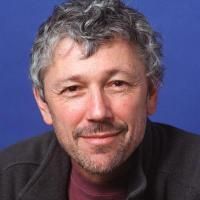Decadal biomass increment in early secondary succession woody ecosystems is increased by CO<sub>2</sub> enrichment.
Date
2019-02
Journal Title
Journal ISSN
Volume Title
Repository Usage Stats
views
downloads
Citation Stats
Abstract
Increasing atmospheric CO2 stimulates photosynthesis which can increase net primary production (NPP), but at longer timescales may not necessarily increase plant biomass. Here we analyse the four decade-long CO2-enrichment experiments in woody ecosystems that measured total NPP and biomass. CO2 enrichment increased biomass increment by 1.05 ± 0.26 kg C m-2 over a full decade, a 29.1 ± 11.7% stimulation of biomass gain in these early-secondary-succession temperate ecosystems. This response is predictable by combining the CO2 response of NPP (0.16 ± 0.03 kg C m-2 y-1) and the CO2-independent, linear slope between biomass increment and cumulative NPP (0.55 ± 0.17). An ensemble of terrestrial ecosystem models fail to predict both terms correctly. Allocation to wood was a driver of across-site, and across-model, response variability and together with CO2-independence of biomass retention highlights the value of understanding drivers of wood allocation under ambient conditions to correctly interpret and predict CO2 responses.
Type
Department
Description
Provenance
Citation
Permalink
Published Version (Please cite this version)
Publication Info
Walker, Anthony P, Martin G De Kauwe, Belinda E Medlyn, Sönke Zaehle, Colleen M Iversen, Shinichi Asao, Bertrand Guenet, Anna Harper, et al. (2019). Decadal biomass increment in early secondary succession woody ecosystems is increased by CO2 enrichment. Nature communications, 10(1). p. 454. 10.1038/s41467-019-08348-1 Retrieved from https://hdl.handle.net/10161/27526.
This is constructed from limited available data and may be imprecise. To cite this article, please review & use the official citation provided by the journal.
Collections
Scholars@Duke

Ram Oren
With his graduate students, Oren quantifies components of the water cycle in forest ecosystems, and their responses to biotic and abiotic factors. Relying on the strong links between the carbon and water cycles, he also studies the components of the carbon flux and their response to these factors. Climate variability, including variations in air temperature, vapor pressure deficit, incoming radiation and soil moisture, and environmental change, including elevated atmospheric carbon dioxide, affect the intra- and inter-annual dynamics, and amounts of water used by forest ecosystems, and their spatial distribution, as well as carbon uptake and sequestration. In turn, the variation of water flux influence the temporal and spatial partitioning of incoming radiation between latent and sensible heat. The flow of water from soil through plant leaves into the atmosphere, and the exchange of water for CO2 absorbed from the atmospheric, are among the processes theoretically best understood in plant and ecosystem physiology. Using these theories, local mass balance approaches, and detailed measurements of water and carbon flux and driving variables in the soil, plants, and the atmosphere, Oren has been attempting to predict the likely responses of forest ecosystems, from the equator to the arctic circle, to environmental change and management.
Unless otherwise indicated, scholarly articles published by Duke faculty members are made available here with a CC-BY-NC (Creative Commons Attribution Non-Commercial) license, as enabled by the Duke Open Access Policy. If you wish to use the materials in ways not already permitted under CC-BY-NC, please consult the copyright owner. Other materials are made available here through the author’s grant of a non-exclusive license to make their work openly accessible.
